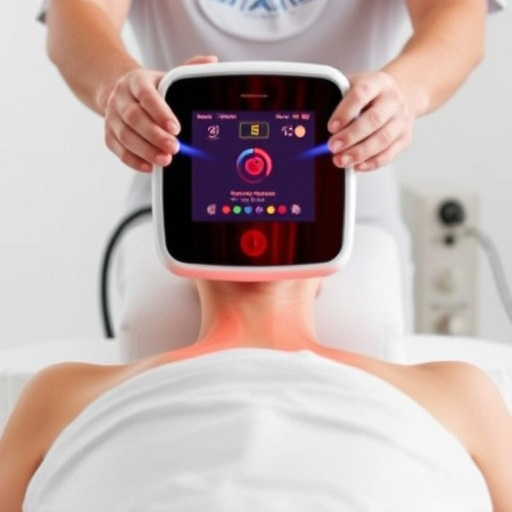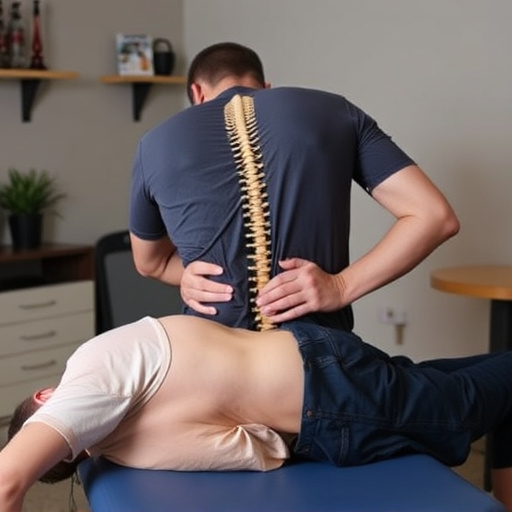Repetitive Strain Injury (RSI) is a growing workplace concern, linked to repetitive tasks and static postures. Ergonomic workspaces with adjustable desks, proper furniture, and accessories can prevent RSI. Regular breaks and stretching routines, coupled with rehab services, are vital for management. These proactive measures boost well-being, productivity, and job satisfaction while reducing workplace injuries and costs.
Workplace-related repetitive strain injuries (RSIs) are a growing concern, impacting productivity and employee well-being. This article explores practical strategies to mitigate RSIs through environmental adjustments and employee practices. We delve into understanding the root causes of these injuries in work settings and offer solutions for creating ergonomic workspaces. Additionally, we highlight the importance of incorporating regular breaks and stretching routines to prevent long-term discomfort and enhance overall job satisfaction.
- Understanding Repetitive Strain Injury in Workplaces
- Designing Ergonomic Workspaces for Prevention
- Implementing Regular Breaks and Stretching Routines
Understanding Repetitive Strain Injury in Workplaces

Repetitive Strain Injury (RSI) is a common concern in modern workplaces, particularly in jobs that involve repetitive tasks and prolonged periods of static posture. It encompasses a range of soft tissue injuries, affecting muscles, tendons, and nerves, often as a result of overuse or excessive strain. RSI can manifest in various ways, from mild discomfort to chronic pain, significantly impacting an individual’s productivity and overall well-being.
In the fast-paced work environments of today, where long hours at a desk are common, employees are increasingly at risk. Simple tasks like typing, clicking a mouse, or even holding a phone for extended periods can lead to RSI if proper precautions aren’t taken. To mitigate these risks, employers and employees alike should focus on proactive measures, including regular breaks, ergonomic workstation setups, and introducing physical therapy interventions as part of chronic pain management strategies.
Designing Ergonomic Workspaces for Prevention

Designing ergonomic workspaces is a proactive approach to prevent repetitive strain injury (RSI) and promote employee well-being. By implementing tailored solutions, organizations can create environments that support the physical needs of their workforce. This includes adjustable desks, which allow employees to alternate between sitting and standing positions throughout the day, reducing static load on muscles and joints. Additionally, investing in high-quality, human-centric furniture ensures proper posture, minimizing the risk of muscle strain and chronic pain management.
Ergonomic accessories, such as wrist supports and ergonomic keyboard setups, further contribute to a comfortable workspace. These tools are particularly beneficial for roles involving prolonged typing or data entry, helping to prevent RSI and offering relief from associated symptoms, including sharp pains and numbness. Incorporating these workplace modifications not only fosters a culture of employee health but also enhances productivity by reducing incidences of work-related injuries, thus improving overall job satisfaction and potentially lowering costs related to absenteeism and workers’ compensation claims.
Implementing Regular Breaks and Stretching Routines

Taking regular breaks and incorporating stretching routines into your workday is a powerful strategy to combat Repetitive Strain Injury (RSI). Prolonged periods of immobility or repetitive tasks can strain muscles, tendons, and nerves, leading to discomfort and potential injury. By setting reminders to get up and move, employees can significantly reduce these risks.
Functional rehabilitation techniques, such as targeted stretching exercises, play a vital role in muscle recovery and overall workplace wellness. Simple movements like reaching for a distant object, rotating your shoulders, or performing wrist stretches can help alleviate tension and promote blood circulation. Leveraging rehab services to incorporate these practices into daily routines ensures that employees not only understand preventive measures but also have access to the necessary support and guidance for effective rehabilitation.
Workplace modifications focused on preventing repetitive strain injury (RSI) can significantly enhance employee comfort, productivity, and overall well-being. By understanding RSI’s common causes in work settings, designing ergonomic workspaces, and incorporating regular breaks with stretching routines, employers can create a safer and healthier environment. These strategies not only reduce the risk of RSI but also foster a culture that values employee care and long-term sustainability.














